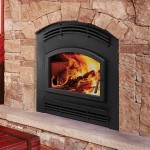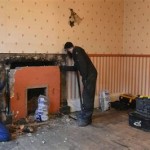Heatilator Gas Fireplace Won't Light: Troubleshooting and Solutions
A Heatilator gas fireplace offers a convenient and aesthetically pleasing heating solution for many homes. However, encountering a situation where the unit fails to ignite can be frustrating and potentially lead to discomfort, especially during colder months. Diagnosing the underlying cause and implementing appropriate corrective measures are crucial to restoring functionality. This article outlines common reasons why a Heatilator gas fireplace might not light and provides a step-by-step guide to troubleshooting and resolving these issues.
Before initiating any troubleshooting steps, it is imperative to prioritize safety. Ensure that the gas supply valve to the fireplace is turned off. Allow ample time for any accumulated gas to dissipate before proceeding. If at any point during the troubleshooting process there is a strong odor of gas, immediately evacuate the premises and contact a qualified gas appliance technician or the local gas utility company.
Pilot Light Issues: The Primary Suspect
The pilot light is a small, continuous flame that ignites the main burner in a gas fireplace. If the pilot light is extinguished, the main burner will not ignite. Several factors can contribute to a pilot light malfunction, including a dirty pilot light assembly, a faulty thermocouple or thermopile, or a blocked pilot tube.
To relight the pilot light, first locate the gas control valve, typically situated near the base of the fireplace. Turn the control knob to the "Pilot" position and press it in. While holding the knob in, use a long-reach lighter or match to ignite the pilot light. Continue holding the knob in for approximately 30-60 seconds to allow the thermocouple or thermopile to heat up. If the pilot light stays lit after releasing the knob, turn the control knob to the "On" position. If the pilot light goes out when the knob is released, there may be an issue with the thermocouple, thermopile, or gas supply.
A dirty pilot light assembly can impede the flow of gas to the pilot light, causing it to extinguish. Use a small brush or compressed air to gently clean the pilot light assembly. Avoid using sharp objects that could damage the assembly. If cleaning does not resolve the issue, the pilot light assembly may need to be replaced by a qualified technician.
The thermocouple or thermopile is a safety device that senses the presence of the pilot light flame. When the pilot light is lit, the thermocouple or thermopile generates a small electrical current that keeps the gas valve open. If the thermocouple or thermopile is faulty, it will not generate enough current, and the gas valve will close, extinguishing the pilot light. A multimeter can be used to test the output voltage of the thermocouple or thermopile. If the voltage is below the manufacturer's specified range, the component needs replacement. This task is best left to a qualified technician.
A blocked pilot tube can also prevent the pilot light from receiving an adequate supply of gas. Locate the pilot tube, a small copper or aluminum tube that connects the gas valve to the pilot light assembly. Disconnect the tube from the gas valve and carefully blow through it to clear any obstructions. Reconnect the tube and attempt to relight the pilot light.
Ignition System Malfunctions: Electronic vs. Standing Pilot
Heatilator gas fireplaces utilize either an electronic ignition system or a standing pilot system. Understanding the type of ignition system is crucial for effective troubleshooting. An electronic ignition system relies on an electronic spark to ignite the gas, while a standing pilot system uses a continuously burning pilot light.
For electronic ignition systems, the igniter or spark electrode may be defective. Visually inspect the igniter for cracks or damage. If the igniter appears to be in good condition, use a multimeter to test its continuity. If the igniter is faulty, it will need to be replaced. Additionally, the ignition module, which controls the spark, may be malfunctioning. Replacing the ignition module may resolve the issue, but this task is generally recommended for qualified technicians.
Another common issue with electronic ignition systems is a dirty or corroded flame sensor. The flame sensor detects the presence of the flame and signals the ignition module to keep the gas valve open. If the flame sensor is dirty or corroded, it may not be able to detect the flame, causing the gas valve to close. Clean the flame sensor with fine-grit sandpaper or steel wool. Be careful not to damage the sensor during cleaning.
In standing pilot systems, issues with the pilot light, as described above, are usually the primary cause of ignition problems. However, other factors, such as a faulty gas valve or a blocked burner, can also prevent the fireplace from lighting.
Gas Supply and Pressure Issues: Ensuring Sufficient Gas Flow
An insufficient gas supply or incorrect gas pressure can prevent a Heatilator gas fireplace from lighting. Verify that the gas supply valve is fully open. Inspect the gas line for any kinks or obstructions that could be restricting gas flow. If possible, check the gas pressure using a manometer. The gas pressure should be within the manufacturer's specified range, which can be found in the fireplace's owner's manual. Adjusting gas pressure is a task reserved for qualified gas appliance technicians.
A faulty gas regulator can also cause gas pressure problems. The gas regulator ensures that the gas pressure remains constant, even when the gas supply pressure fluctuates. If the gas regulator is defective, it may not be providing the correct gas pressure to the fireplace. Replacing the gas regulator should be performed by a qualified technician.
Moreover, the main burner itself may be clogged or blocked, preventing gas from flowing properly. Inspect the burner ports for any debris or obstructions. Use a small brush or compressed air to clear any blockages. A blocked burner can significantly reduce the fireplace's heating efficiency and prevent it from lighting.
Addressing the reasons why a Heatilator gas fireplace won't light often involves a systematic approach, beginning with the most common causes. If the problem persists after attempting these troubleshooting steps, consulting a qualified gas appliance technician is the safest and most effective course of action. Attempting to repair gas appliances without the proper training and experience can be dangerous and may void the manufacturer's warranty. Professional assistance ensures a safe and reliable resolution to the issue.

Heatilator Gas Fireplace Troubleshooting

Heatilator Gas Fireplace Troubleshooting

Heatilator Gas Fireplace Troubleshooting

Heatilator Gas Fireplace Troubleshooting

Relighting Your Heatilator Standing Pilot Fireplace

Gas Fireplace Doctors Index

Why Your Gas Fireplace Won T Light And How To Fix It

Gas Fireplace Malfunction Doityourself Com Community Forums

Gas Fireplace Malfunction Doityourself Com Community Forums

The Main Burner Flame Will Not Come On Or Stay Www Mygasfireplacerepair Com
Related Posts








